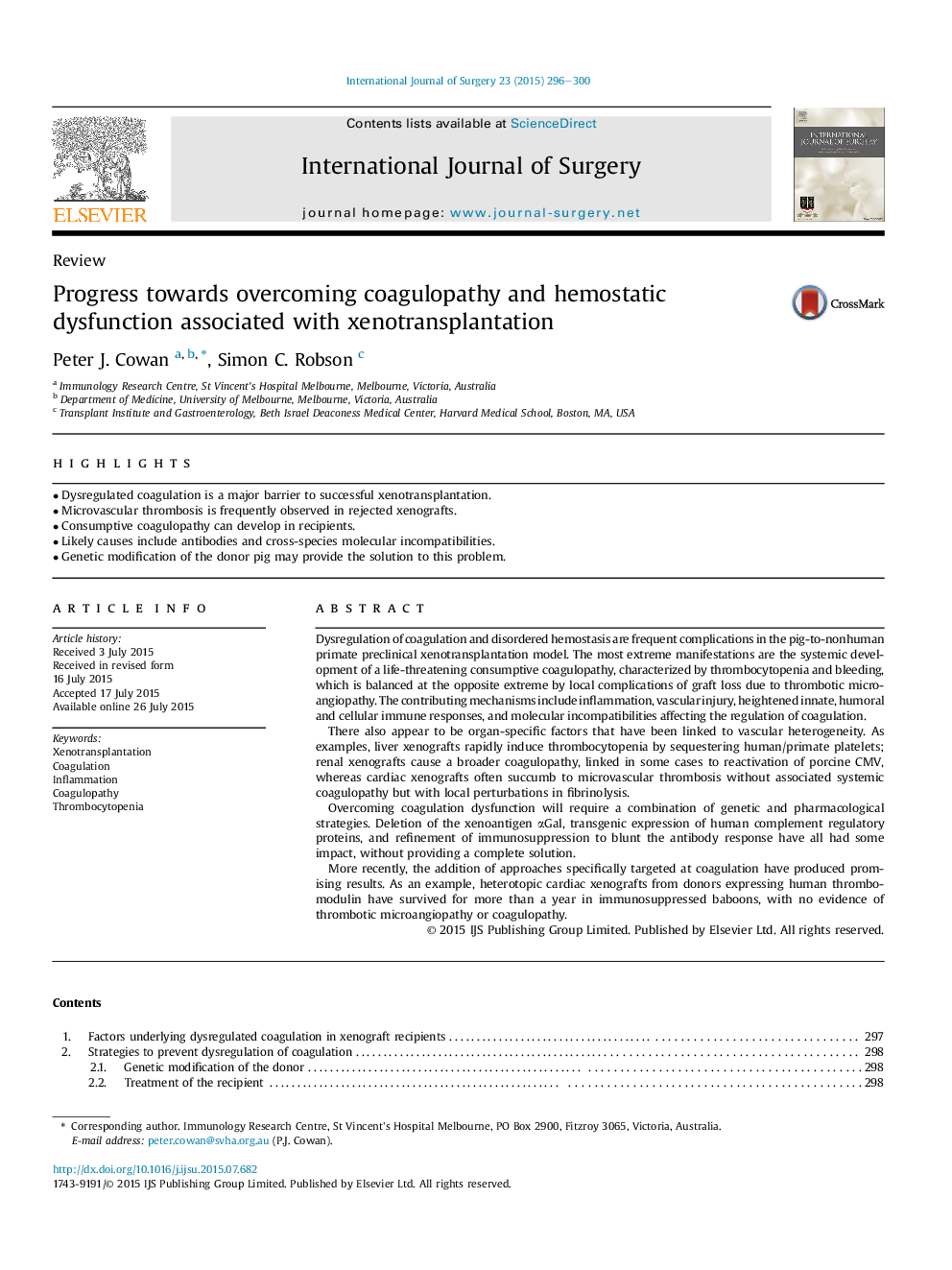| Article ID | Journal | Published Year | Pages | File Type |
|---|---|---|---|---|
| 4285729 | International Journal of Surgery | 2015 | 5 Pages |
•Dysregulated coagulation is a major barrier to successful xenotransplantation.•Microvascular thrombosis is frequently observed in rejected xenografts.•Consumptive coagulopathy can develop in recipients.•Likely causes include antibodies and cross-species molecular incompatibilities.•Genetic modification of the donor pig may provide the solution to this problem.
Dysregulation of coagulation and disordered hemostasis are frequent complications in the pig-to-nonhuman primate preclinical xenotransplantation model. The most extreme manifestations are the systemic development of a life-threatening consumptive coagulopathy, characterized by thrombocytopenia and bleeding, which is balanced at the opposite extreme by local complications of graft loss due to thrombotic microangiopathy. The contributing mechanisms include inflammation, vascular injury, heightened innate, humoral and cellular immune responses, and molecular incompatibilities affecting the regulation of coagulation.There also appear to be organ-specific factors that have been linked to vascular heterogeneity. As examples, liver xenografts rapidly induce thrombocytopenia by sequestering human/primate platelets; renal xenografts cause a broader coagulopathy, linked in some cases to reactivation of porcine CMV, whereas cardiac xenografts often succumb to microvascular thrombosis without associated systemic coagulopathy but with local perturbations in fibrinolysis.Overcoming coagulation dysfunction will require a combination of genetic and pharmacological strategies. Deletion of the xenoantigen αGal, transgenic expression of human complement regulatory proteins, and refinement of immunosuppression to blunt the antibody response have all had some impact, without providing a complete solution.More recently, the addition of approaches specifically targeted at coagulation have produced promising results. As an example, heterotopic cardiac xenografts from donors expressing human thrombomodulin have survived for more than a year in immunosuppressed baboons, with no evidence of thrombotic microangiopathy or coagulopathy.
